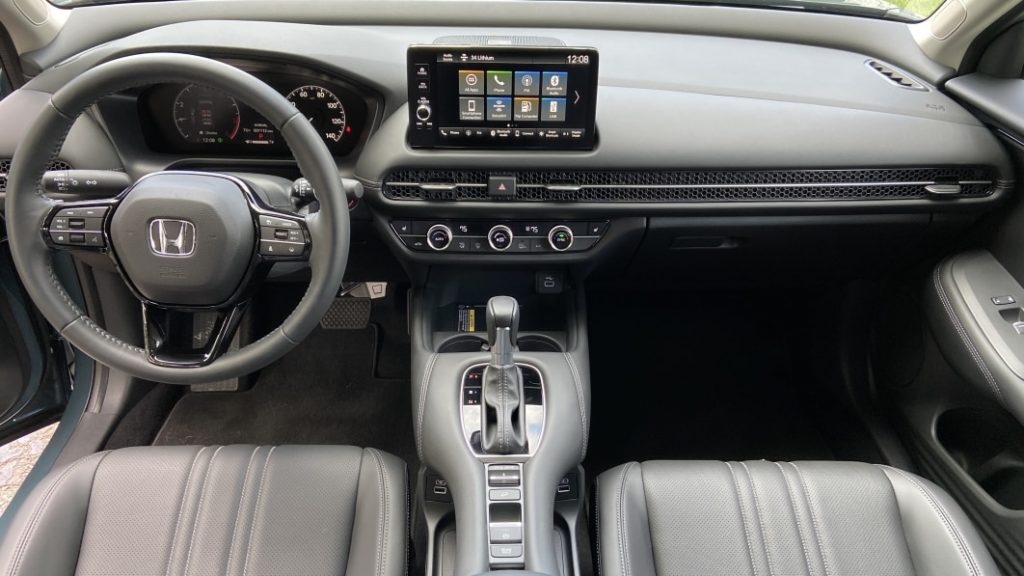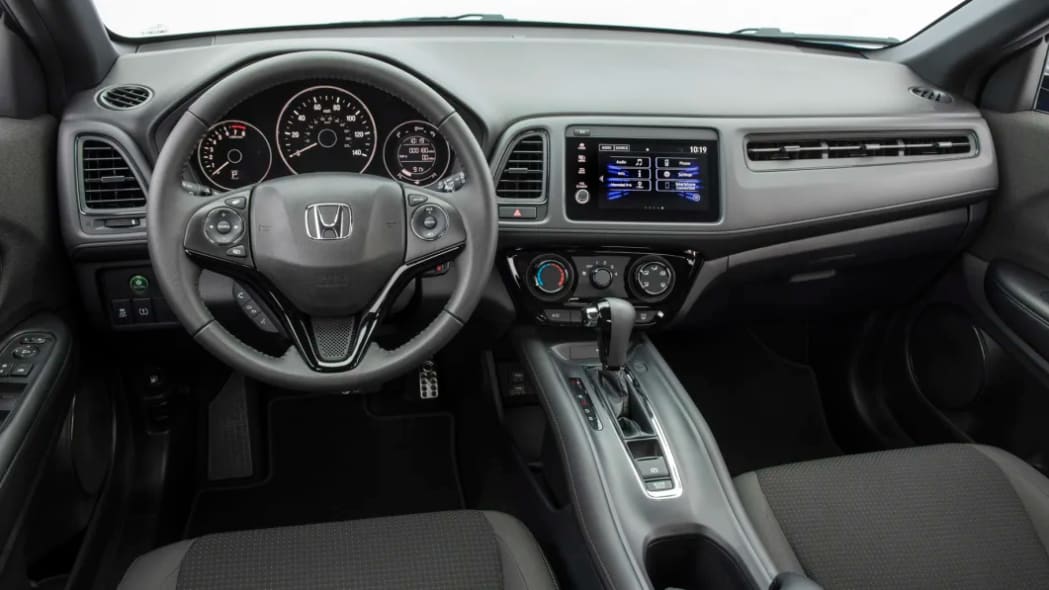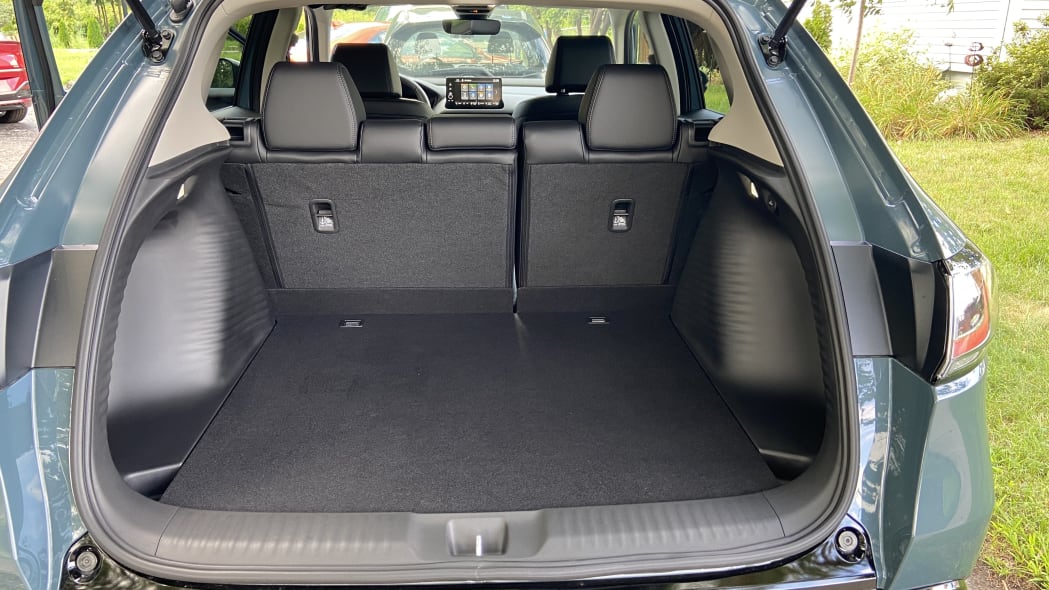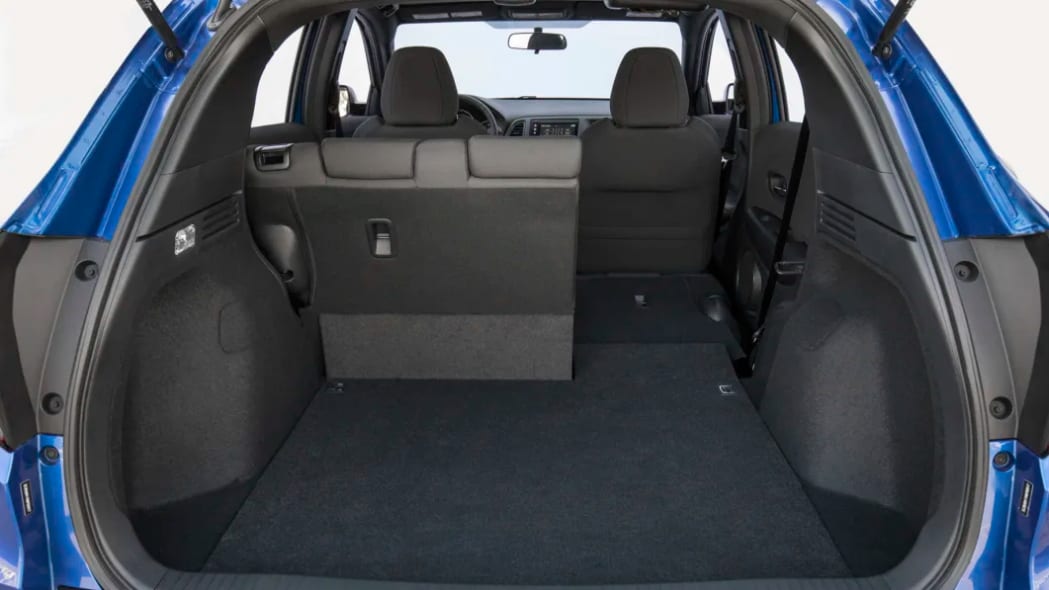2023 Honda HR-V EX-L Interior Review: Civic-based means civilized

Monsters like the new Cadillac Escalade-V may dominate SUV headlines (and profit margins), but by far the most prolific niche for SUV-ification is the baby crossover segment. Examples such as the first-generation HR-V, Hyundai Kona and Jeep Renegade were born from subcompact sedan and hatchback platforms, but the latest round of baby CUVs (such as this 2023 Honda HR-V) approaches the segment with a bit more ambition — and corresponding price increases.
Unlike its predecessor, which was essentially a Fit on stilts, the new 2023 HR-V is closely related to the larger Civic (strange way to look at it, no?) with some bits and pieces from the last CR-V thrown in for good measure. Not only does the HR-V carry over some of the new Civic interior’s stylistic elements, it also got an upgrade in materials quality, fit and finish. Gone are the hard plastic door-toppers and ugly hodgepodge of air vents and pleather. In their place, we get the soft-touch materials and a variation of the Civic’s full-width eggcrate vent cover. Yet another variation of it is found in the new CR-V.

The previous HR-V’s interior was reasonably nice for the segment when it debuted for the 2016 model year, and in terms of materials, represented a clear step up from the humble Fit. It eventually got long in the tooth, however, especially as more competitors showed up with more interesting designs and vastly better infotainment systems. The redesign improves upon everything in just about equal measure. The infotainment system is shared with the Civic, meaning lower trims get a 7-inch touchscreen supported by physical menu shortcut buttons (and yes, a volume knob), while the EX-L gets a bigger 9-inch screen that cancels out most of those physical buttons and replaces them with menu icons that stay docked at the bottom of the screen. Those buttons, real and virtual, along with other UI improvements means there’s less menu back-and-forth in the new HR-V. It seems less prone to slow responses and glitches, too. One possible problem, though: the absence of a Touring trim (this EX-L is as loaded as the new HR-V gets) means there’s no longer an option for integrated GPS navigation. You’ll need your smartphone and a functional cell signal.


There are some downsides to the Civic platform migration. One of the HR-V’s most beloved party pieces (around here anyway) was the “magic seat” system it inherited from the Fit. These allowed for multiple configurations and a low, truly fold-flat rear cargo area. These were lost in the transition, sadly, so the HR-V’s rear seatback folds only to that slightly-inclined angle that is universal to small hatches and crossover SUVs (despite some clever engineering to make sure the seat bottom folds down a bit to make way for the seat back). The end result is not quite flat, but it’s flat enough, we suppose. Two-wheel-drive models even gain about 2 cubic feet of total cargo volume.
The change to a more conventional, Civic-related platform from the oddball Fit also makes comparing back seat space a bit of a head scratcher. The specs say the old HR-V had more rear legroom, but that’s a bit deceptive. That old “magic seat” sat higher off the ground, creating a more chair-like seating position that provided a surprising amount of legroom even if your knees were actually quite close to the seats ahead. The new one has more space between rows but is lower to the ground. That’s why the on-paper dimensions are a tiny bit worse, but there’s a greater feeling of spaciousness and more actual room for rear-facing child seats. The back seat is wider, too, although if you’re routinely putting three people abreast, something quite a bit larger is in order — think Passport or Pilot, not something ending in -V.
All in all, it’s a nice series of upgrades that manages to improve the experience while keeping the price from nudging too far past the $30,000 barrier. Our tester, all-in, rang the till at $30,590, which just undercuts the entry-level CR-V. Normally, we’d expect some overlap between the two, but perhaps Honda decided it would rather nudge those looking at a well-equipped HR-V into its larger (and more profitable) sibling.
Related Video




